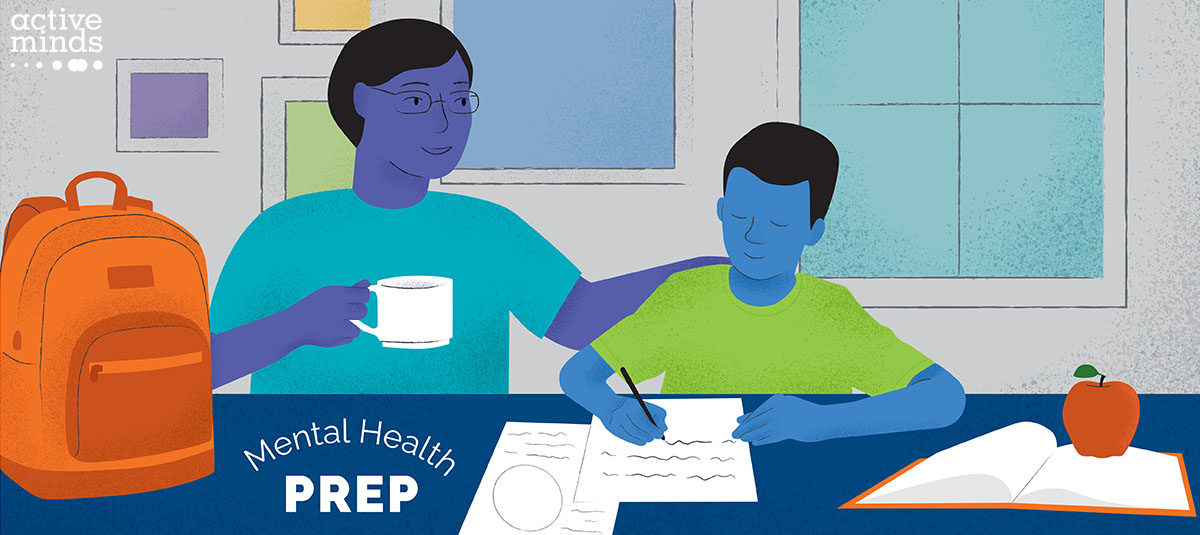One day, I was unpacking my two oldest daughters’ backpacks (both elementary students), and a worksheet caught my attention. It was a “gratitude jar” coloring page, and both of my children scribbled into their jars pictures of things they most appreciated: our dog, their friends, cheese, and more.
The worksheet stood out amid all the math, reading, and science assignments, so I asked them about it. My oldest proudly said, “Oh yeah, that’s from our new S-E-L class. It stands for social-emotional learning.”
My heart skyrocketed with excitement. Ten years ago, it had taken work to help most people see the value of mental health in schools. Now, my kids have brought it home. It hadn’t occurred to me that my kids might be old enough to talk about mental health yet. This felt like a green light and a call to action. #MentalHealthNerdMom that I am, I was ready to answer the call. Suddenly, I couldn’t stop seeing opportunities to talk to my kids about mental health, and through that, I developed my own list of mental health parenting tips.
Now, talking about mental health feels embedded in our everyday lives. I found that as a result, my relationship with them has grown in a big way. I know that it might not be easy to start these conversations, especially if you didn’t grow up talking about your feelings, emotions, and mental health with your parents. However, it’s important to break that generational cycle, and there are ways to do so. Here are a few simple mental health parenting tips and strategies I use that seem to make a difference:
1) Introduce mental health-friendly books and movies: Stories are powerful. Whether experienced through a book or a movie, stories unleash kids’ curiosities and imaginations. With my kids, books and movies have often led to amazing mental health conversations, and I often learn from and feel inspired by them, too! I’ve also had the chance to read to my kids’ classes on occasion, which gave me the chance to share a mental health-friendly children’s book with their peers, too. Some of our family favorites are “The Good Egg,” “Stick and Stone,” “The Worrysaurus,” “We Don’t Eat Our Classmates,” and “Giraffes Can’t Dance.” In the movie department, we’ve enjoyed and gotten great conversations out of “Turning Red,” “Inside Out,” “Wonder“, and “Soul.”
2) Establish a no-judgment rule in our house: We have a rule that the kids can ask me anything they want and I will always answer with as much transparency as I can. On many occasions, this rule has led them to ask for a private conversation. No matter what they share or ask, I try to stay in listening mode for as long as possible. In our family, setting a no-judgment zone sounds like:
- “And then what happened?” “How did that make you feel?” “How do you think that made them feel?” “What feels like a good next step to you?” “What do you think about that?” (i.e. asking lots of questions, withholding fast solutions, and showing interest and curiosity).
- “I don’t know the answer to that. Would you want to look it up with me? Maybe we can find the answer together.”
- “We all make mistakes. That’s part of learning.” (Plus, if I have a story that demonstrates that I have made the same mistake myself, I usually share it.)
I look for opportunities to talk to them about mental health and emotional health, using those words, especially if there’s a connection to what’s happening in the world currently so that they get used to hearing about it as often as any other topic.
3) Make my own mental health and self-care visible: My kids see me do a lot of things throughout the day – they see me work, clean, do laundry, play with them, and prepare their school lunches. They also see me go to the gym for a full hour for “me” time most nights. And, they know that when mom is frustrated or pensive, she goes for walks and drives. It’s not uncommon to hear, “Mom’s going on a drive again,” which of course makes me smile and laugh. But, these are the strategies I’ve found that I need to stay balanced as a human being, and I want my kids to know and expect that they may need to find theirs, as well. When possible, learning is more effective when it’s modeled.
4) Normalize sharing stories about asking for help: When my daughter was able to return to in-person classes for the first time during the COVID-19 pandemic, her teacher told me that often she would struggle with her reading and cry silently at her desk rather than raise her hand for help. This deeply bothered me as a parent. One of the solutions I came up with was to ask my kids often at the end of the day, questions like “Tell me about when you needed to ask for help today,” alongside other more typical questions like “Who did you play with?” and “Tell me something you learned.” My goal is just to communicate that asking for help is something we all need to do, often.
5) Ask them what else they are learning about mental health: My kids LOVE “teaching” me about what they learn in their S-E-L class. So far, I’ve learned that one of my kids likes to breathe like a dragon, as taught to her by their guidance counselor; her sister likes to breathe in to smell the roses and to breathe out the birthday candles. They’ve shared that a few of their friends have chosen to see the guidance counselor privately as a result of getting to know the counselors through the class.
When it comes to mental health conversations, I don’t always know what to say or how to say it, but what’s never failed me is asking my kids a couple of questions and following their lead from there. In general, it feels good to start somewhere and I’ve found the above mental health parenting tips have helped to invite my kids into an ongoing conversation that stays open all year long.




